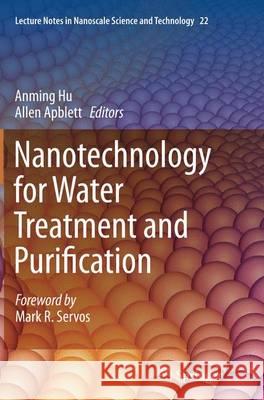Nanotechnology for Water Treatment and Purification » książka



Nanotechnology for Water Treatment and Purification
ISBN-13: 9783319374703 / Angielski / Miękka / 2016 / 373 str.
Nanotechnology for Water Treatment and Purification
ISBN-13: 9783319374703 / Angielski / Miękka / 2016 / 373 str.
(netto: 576,41 VAT: 5%)
Najniższa cena z 30 dni: 578,30 zł
ok. 22 dni roboczych
Bez gwarancji dostawy przed świętami
Darmowa dostawa!
This book describes the latest progress in the application of nanotechnology for water treatment and purification.
"This interdisciplinary book is indeed written for a broad audience of municipal water managers, engineers, researchers ... describing the latest progress in the application of nanotechnology for water treatment and purification. ... Nanotechnology for Water Treatment and Purification is not only an excellent scientific lecture but also a working instrument to be found on the laboratory bench of the scientists and on the bureau of responsible policymakers active in wastewater and drinking water treatment." (Ioan I. Ardelean, Bulletin of Micro and Nanoelectrotechnologies, Vol. 6 (1-2), 2015)
Preface
Foreword
Chapter 1. Fundamentals on adsorption, membrane filtration, and advanced oxidation processes for water treatment by Robert Liang, Anming Hu, and Norman Zhou
Chapter 2. Development of TiO2 Nanowires for Membrane Filtration Applications by Robert Liang, Anming Hu, and Norman Zhou
Chapter 3. Photocatalytic Decomposition of Environmentally Persistent Perfluorooctanoic Acid by Pengyi Zhang and Zhenmin Li
Chapter 4. Electrospun Nanofiber Membranes and their Applications in Water and wastewater Treatment by Shahram Tabe
Chapter 5. Fullerenes and Carbon Nano-onions for Environmental Application by Yusong Li and Megan Seymour
Chapter 6. Graphene—Environmental and Sensor Applications by Sarang V. Muley and Nuggehalli M. Ravindra
Chapter 7. Magnetically recyclable nanomaterials for water treatment by Tim Leshuk and Frank Gu
Chapter 8. Removal of 4, 6-Dinitro-O-Cresol, Congo Red Dye and Decane from Water Using Magnetic Activated Carbons by Tarek Trad and Allen Apblett
Chapter 9. Effects of Nanotechnologies on Disinfection Byproduct Formation by Aleksandra Sokolowski, Stephanie Gora, and Susan Andrews
Chapter 10. Nanotechnology in Contemporary Mine Water Issues by Ken Oakes, Zhi Shan, Rajendran Kaliaperumal, Shine Xu Zhang, and Martin Mkandawire.
Index.Anming Hu is an assistant professor in the Department of Mechanical, Aerospace and Biomedical Engineering, University of Tennessee, USA, and former research assistant professor in the Department of Mechanical and Mechatronics Engineering at the University of Waterloo, Canada. He and his colleagues began studying the application of nanotechnology for water treatment and purification in 2009. The research is funded by the Canadian Water Network, the Natural Science and Engineering Research Council (NSERC), Canada. Anming Hu is also working on laser-based advanced manufacturing, nano photonics and ultrafast laser-materials interaction.
Allen Apblett is an Oklahoma State University professor of chemistry, Councilor the Oklahoma Section of the American Chemical Society and President of XploSafe, LLC. His interests include industrial, materials and environmental chemistry, catalysis, and metallo-organic chemistry applied to development of new chemical processes. Recently he focuses on explosive detection and neutralization, nanotechnology for water purification, sensors and arsenic remediation.This book describes the latest progress in the application of nanotechnology for water treatment and purification. Leaders in the field present both the fundamental science and a comprehensive overview of the diverse range of tools and technologies that have been developed in this critical area. Expert chapters present the unique physicochemical and surface properties of nanoparticles and the advantages that these provide for engineering applications that ensure a supply of safe drinking water for our growing population. Application areas include generating fresh water from seawater, preventing contamination of the environment, and creating effective and efficient methods for remediation of polluted waters. The chapter authors are leading world-wide experts in the field with either academic or industrial experience, ensuring that this comprehensive volume presents the state-of-the-art in the integration of nanotechnology with water treatment and purification.
- Covers both wastewater and drinking water treatment
- Provides concise yet thorough coverage of the fundamentals of nanomaterials and treatment processes as well as insights into future R&D trends
- Presents the latest progress in research and prototype testing lines
- Written for a broad audience of engineers, researchers, municipal water managers, and policymakers
1997-2025 DolnySlask.com Agencja Internetowa
KrainaKsiazek.PL - Księgarnia Internetowa









